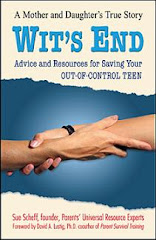
"Unless your older child or adolescent has a cell phone glued to their ear for several hours a day, you probably don’t have to worry about anything.”
– Nick DeFilippis, Ph.D., Neurologist
When Jordan Mandelbaum goes to the mall, her mom gives her a cell phone to stay in touch.
But the 14-year-old admits, she’ll use the phone to “contact” everyone she can.
“Just that idea that you have the opportunity to use the phone so you’re gonna use it,” Jordan says.
The phone may help her social life, but could it also be giving her cancer?
Researchers at Tel Aviv University, in Israel, studied people with salivary gland cancer and those without.
They found that those people who were heavy cell phone users were fifty percent more likely to develop a tumor of the salivary gland.
So, what constitutes heavy use?
Neurologist, Dr. Nick DeFilippis says, “Unless your older child or adolescent has a cell phone glued to their ear for several hours a day, you probably don’t have to worry about anything.”
What’s more, experts say, as of yet there are no conclusive studies that show that cell phones are a cause of cancer.
“Because those are not really controlled studies. They’re basically are studies where they try to observe uh, what has happened and try to correlate it with factors that may have lead to the increased risk,” explains Nabil Saba, M.D., assistant professor of hematology and oncology at Emory University.
He says more research is needed to be done.
In the meantime, his advice, “I think everything in moderation is good. I do not think you should take the action of preventing cell phone use.”
Although, as a concerned mom, Lynn says that still doesn’t set her mind at ease. “I think as a parent I’ve gotta keep my eyes and ears open for future research.”
Tips for Parents
– Nick DeFilippis, Ph.D., Neurologist
When Jordan Mandelbaum goes to the mall, her mom gives her a cell phone to stay in touch.
But the 14-year-old admits, she’ll use the phone to “contact” everyone she can.
“Just that idea that you have the opportunity to use the phone so you’re gonna use it,” Jordan says.
The phone may help her social life, but could it also be giving her cancer?
Researchers at Tel Aviv University, in Israel, studied people with salivary gland cancer and those without.
They found that those people who were heavy cell phone users were fifty percent more likely to develop a tumor of the salivary gland.
So, what constitutes heavy use?
Neurologist, Dr. Nick DeFilippis says, “Unless your older child or adolescent has a cell phone glued to their ear for several hours a day, you probably don’t have to worry about anything.”
What’s more, experts say, as of yet there are no conclusive studies that show that cell phones are a cause of cancer.
“Because those are not really controlled studies. They’re basically are studies where they try to observe uh, what has happened and try to correlate it with factors that may have lead to the increased risk,” explains Nabil Saba, M.D., assistant professor of hematology and oncology at Emory University.
He says more research is needed to be done.
In the meantime, his advice, “I think everything in moderation is good. I do not think you should take the action of preventing cell phone use.”
Although, as a concerned mom, Lynn says that still doesn’t set her mind at ease. “I think as a parent I’ve gotta keep my eyes and ears open for future research.”
Tips for Parents
According to CNET, the 10 highest radiation cell phones for sale in the United States are:
Motorola V195s
Motorola Slvr L6
Motorola Slvr L2
Motorola W385
RIM BlackBerry Curve 8330 (Sprint)
RIM BlackBerry Curve 8330 (Verizon Wireless)
Motorola Deluxe ic902
T-Mobile Shadow (HTC)
Motorola i335
Samsung Sync SGH-C417
Other technologies that use RF are cordless phones, radios, microwaves and TV broadcasting.
According to the FDA, ”the research done thus far has produced conflicting results, and many studies have suffered from flaws in their research methods. Animal experiments investigating the effects of radiofrequency energy (RF) exposures characteristic of wireless phones have yielded conflicting results that often cannot be repeated in other laboratories. A few animal studies, however, have suggested that low levels of RF could accelerate the development of cancer in laboratory animals.”
Of course, the FDA reminds us that, as with many animal studies, “the animals [were] to RF for up to 22 hours per day. These conditions are not similar to the conditions under which people use wireless phones, so we don’t know with certainty what the results of such studies mean for human health.”
The FDA does advise, however, that if you use a cell phone for several hours every day to use a headset and carry the cell phone away from your body.
Currently, there is no evidence to suggest that children and teenagers are more vulnerable to cell phone radiation than adults, however, some countries have taken steps to limit the cell phone use among those age groups, including the United Kingdom.
References
Emory University
U.S. Food and Drug Administration











